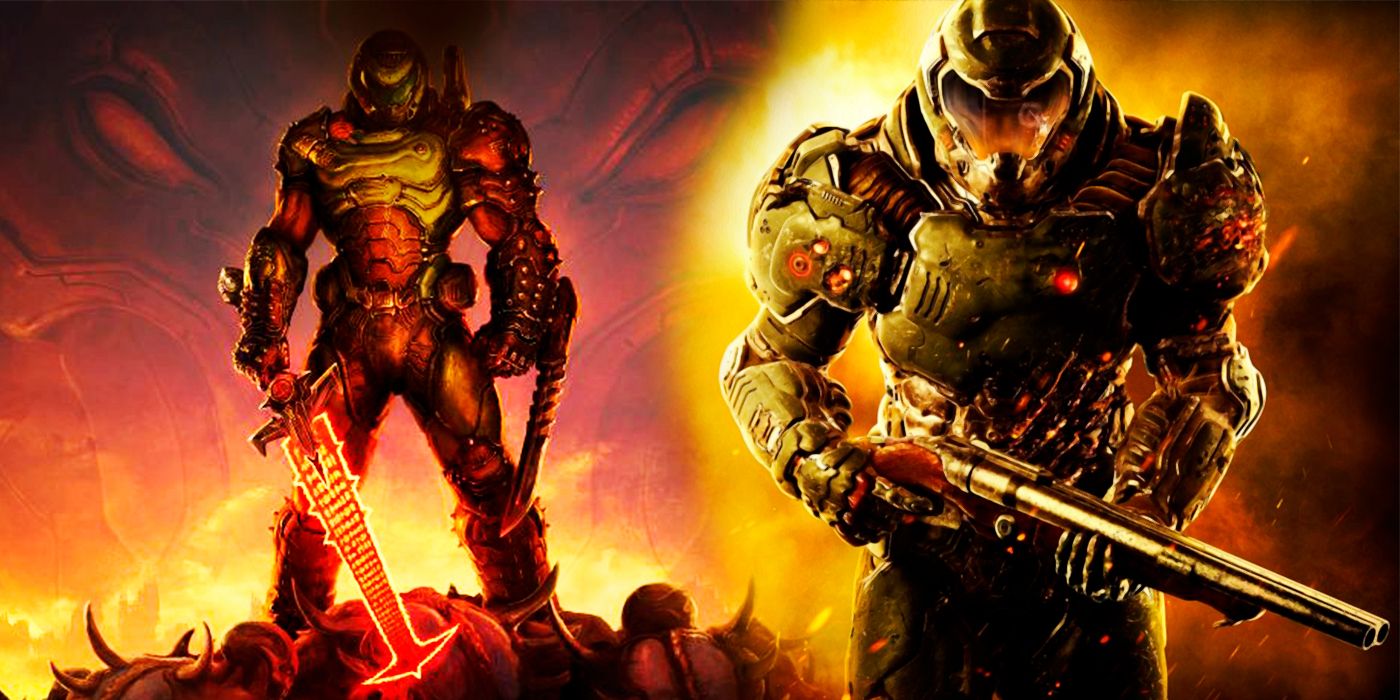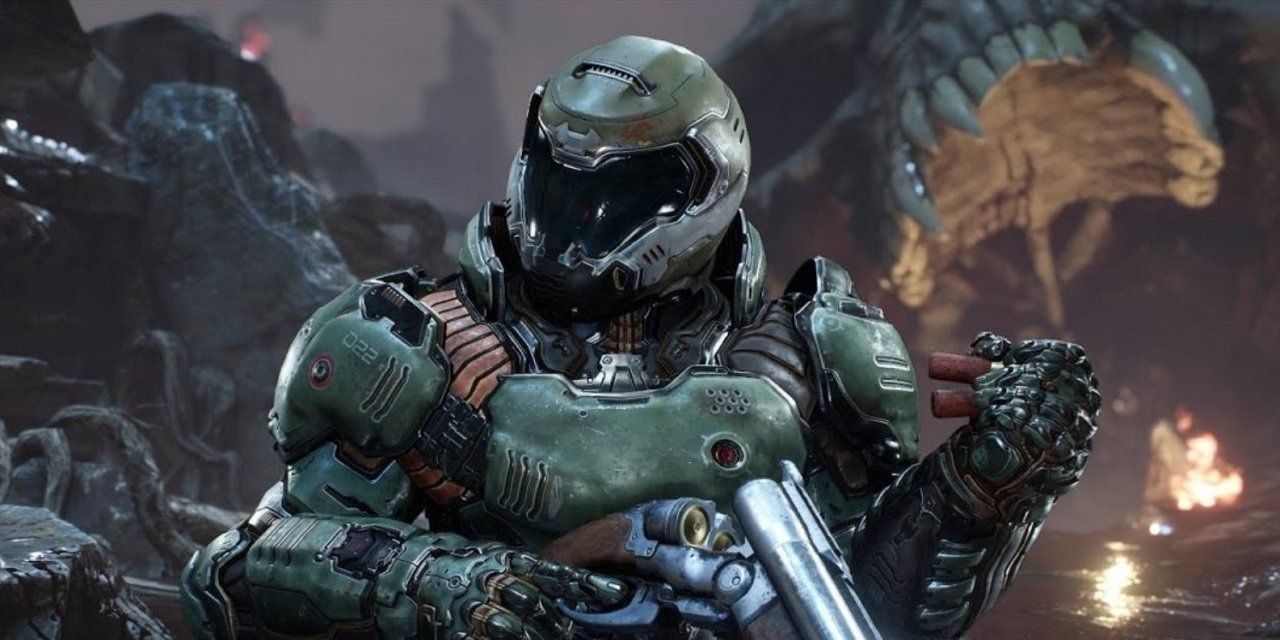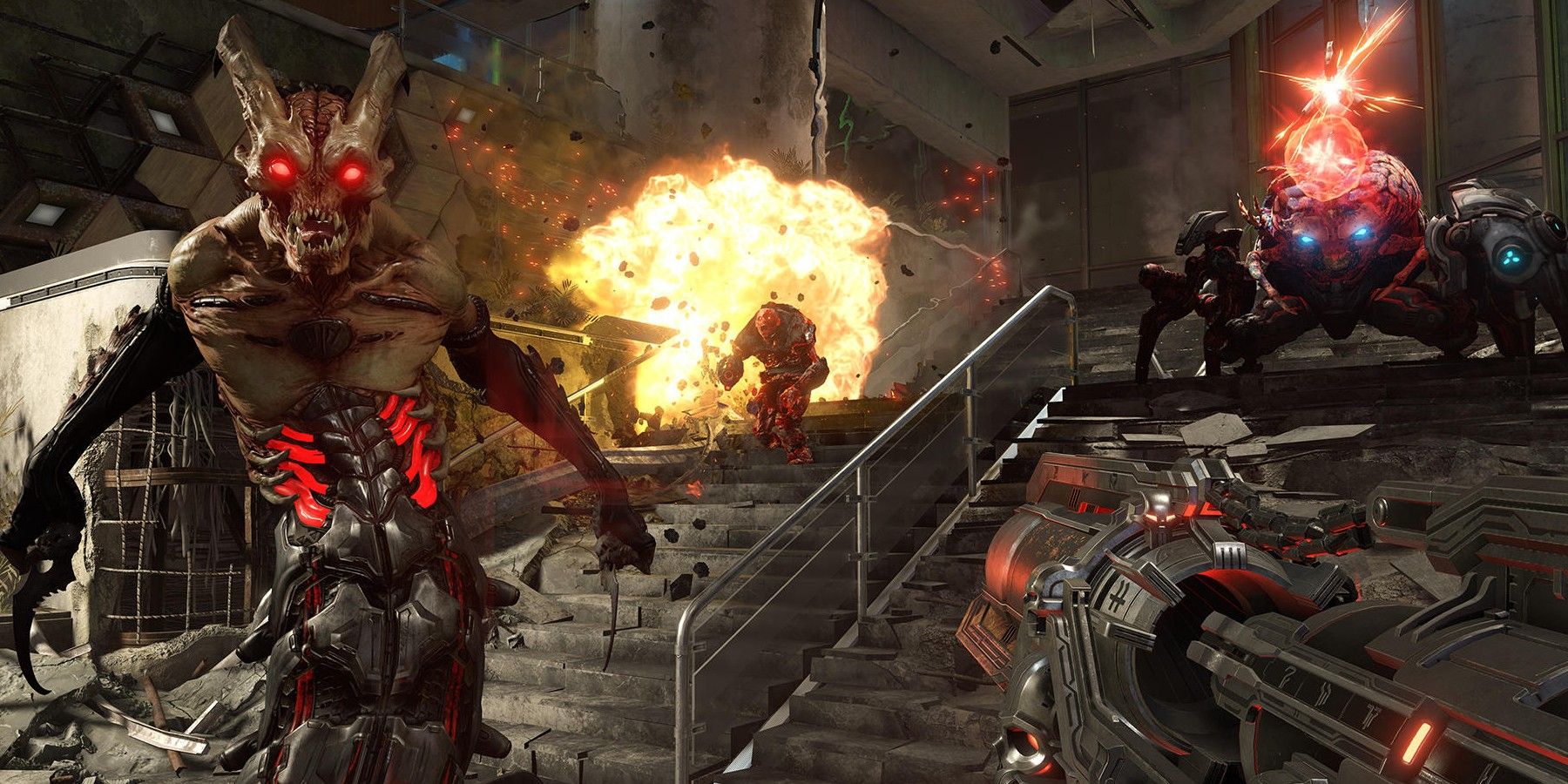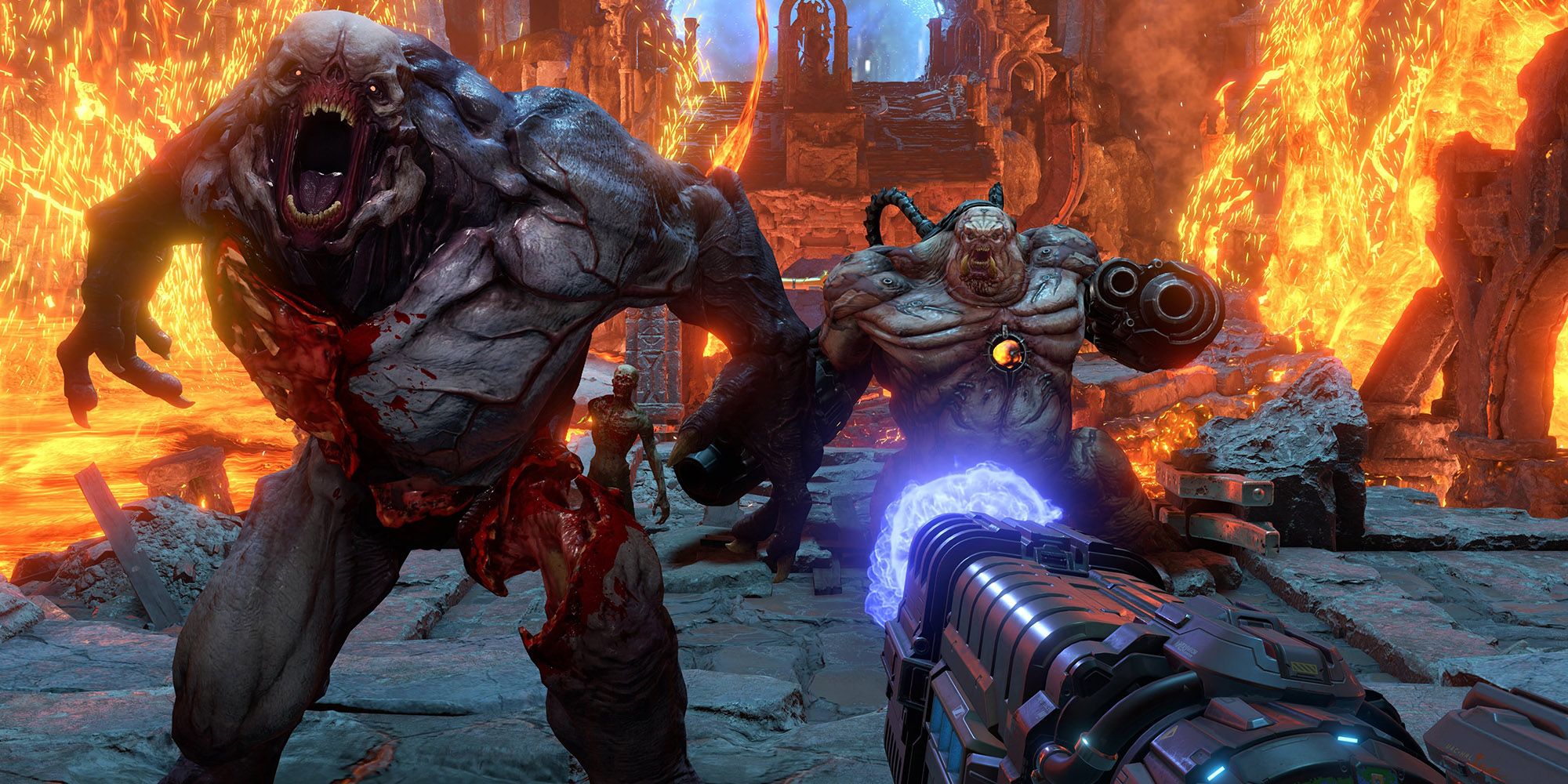At its core, the DOOM series has a simple elegance about it. A lone space marine must go up against the armies of Hell in brutal, fast-paced combat while navigating mazelike levels for keys, health and ammo. Beginning in 2016, the rebooted series brought those same sensibilities to modern audiences with new twists reflecting evolutions in game design since 1993. DOOM (2016) and DOOM Eternal were both huge releases with millions of copies sold and dozens of award nominations between them.
There are, however, some major differences between the two games. DOOM (2016) revisited the franchise's roots after DOOM 3's divisive detour into survival horror territory to deliver a tight, action-focused thrill ride. Four years later, DOOM Eternal expanded its predecessor's balletic combat with new weapons and more options for traversing combat arenas while telling a more involved story. The two titles provide unique experiences based on the same philosophies, but which one is the better game?
DOOM (2016) Was Built On the Original DOOM's Bones
Upon release, DOOM (2016) was a breath of fresh air in a market saturated by Call of Duty and its imitators. Instead of taking cover to regenerate health lost to instant-hit attacks, players had to dance around the battlefield to avoid brightly-colored projectiles and directly engage with enemies to regain health. This makes for frantic combat that never feels unfair and rewards smart, aggressive play. Modern additions such as upgrades, collectibles, and alternate fire modes are streamlined, enhancing gameplay built on the original DOOM's bones. Critics and fans agreed in praising the game's single-player campaign for its focus on tight, accessible play with secrets and numerous difficulty settings providing ample replayability.
However, two key areas where the remake fell short were multiplayer and modding. The multiplayer portion of the game was adequate but felt like an afterthought compared to the robust single-player campaign. For a franchise that forms a cornerstone of online shooters, expectations were high, and "adequate" was a disappointment.
Similarly, DOOM (2016) isn't as open to the modding community as previous entries in the series. The original DOOM is nearly endlessly moddable, which many credit with its extraordinary lifespan. The 2016 game isn't as friendly, although it does have a robust map making tool called SnapMap that allows users to easily create and share some impressive custom levels.
DOOM Eternal Alienated As Many Players As It Intrigued
After the success of DOOM (2016), fans were eager for its follow-up. When DOOM Eternal released in 2020, it followed many of the design cues of its predecessor in specific directions that elated some audiences and alienated others. The secondary weapons introduced in the first game, such as grenades and decoys, are more integral to combat as ammo caps are lower. Using different weapon types to kill demons rewards players with different resources.
At the same time, critical weak spots on enemies have new prominence to weaken enemies, such as disabling their heavier attacks and conserving precious ammo. The Doom Slayer is more agile, too, with double-jumps, dashes, wall-climbs, and swinging all added. These new layers change the rhythm of the combat, taking the same basic philosophy of quick movement and aggressive play to greater heights.
For some, though, the amplified gameplay proved too much. Critics of DOOM Eternal claim the new combat style is restrictive, preventing players from approaching the game's challenges in their own way. Others dislike having to juggle multiple weapon types while navigating complex fight arenas in a series that has traditionally had a more straightforward play style. The more involved storytelling also drew fire for taking a silly premise too seriously. Ambitious plans for an invasion-style multiplayer mode were shelved due to disruptions from COVID-19, leaving DOOM Eternal with lackluster multiplayer similar to its predecessor.
DOOM (2016) Is Far Superior to DOOM Eternal?
For many, the answer depends on what type of game they are looking for. DOOM (2016) delivers a much tighter campaign with its focus squarely on recreating the ethos of the original games. It feels very much like a modern take on the classic design philosophy and will satisfy newcomers and diehards alike. DOOM Eternal expands upon a specific interpretation of what DOOM is. Those who will enjoy it will delight in it, but it will put off as many as it draws in.
In the end, DOOM Eternal's more amplified vision will greatly satisfy those who get its rhythms, but it falls too easily into excess. DOOM (2016) wins out with its greater polish. Its tighter focus on a specific set of principles stirs the same feelings of intensity and accomplishment that made DOOM great in the first place.




